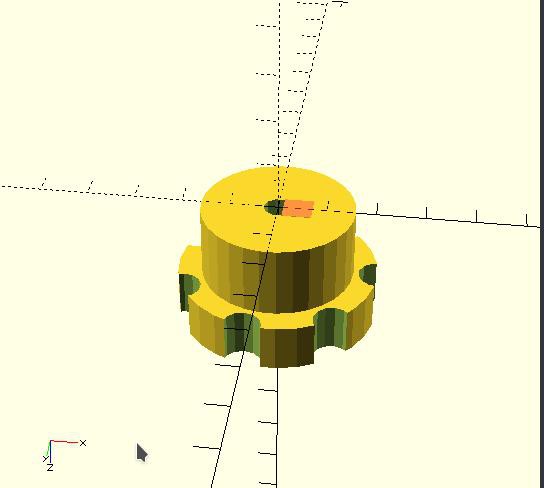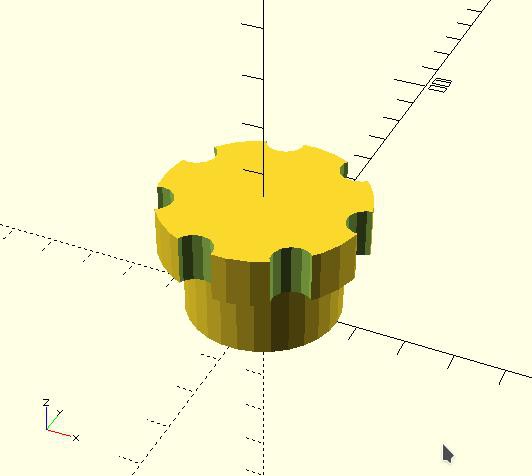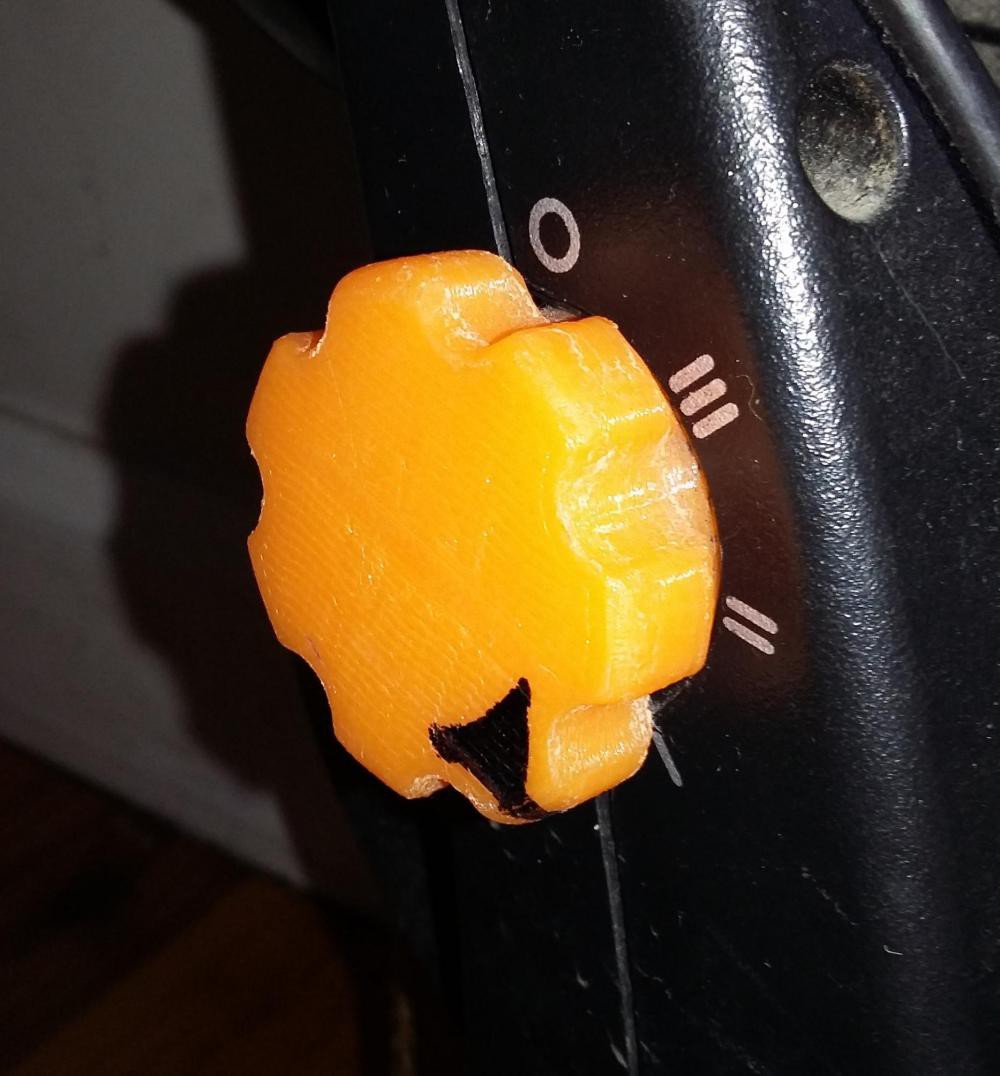I have a Vornado floor-fan for blowing cooling fresh breeze around the room at home, or clearing out the room when I release the magic smoke from some electronics. One annoying feature was the dial for switching it on and setting the speed. The dual was too small and required too much finger torque to adjust. Soon the knob split in half, making the fan unusable. Using a pair of pliers to control the fan was unacceptable (-WAF). No spare parts are available for this fan. Rather than buying a new fan I designed and printed a new control knob.
I improved the knob design, making it more robust so it won't break again. The standard infill in from the 3d printer already makes it stronger than the original. I also added an extended external grip to make it easier to turn. An added bonus is it is also easier to find the control in the dark.
The part was designed in open scad. the code to make the part is included below. This can be modified for any other knob dimensions. See the comments in the code for an explanation of how the code works. If this helps, please freely use the code in your own project, you don't even need to give attribution. The .stl file is also attached if you have the exact same fan (Vornado), however you should tweak the dimension of the inner hole as it was a bit small on my printer and I had to jam it on at first.
Conclusion
The knob works really well. Easier to use/less finger strength need, compared to the original. Stronger and more durable. Easier to use in the dark.
commented source code is included so you can freely adapt this to your own equipment if needed.
3d printed part completed the repair better than originally expected, with a +WAF.


